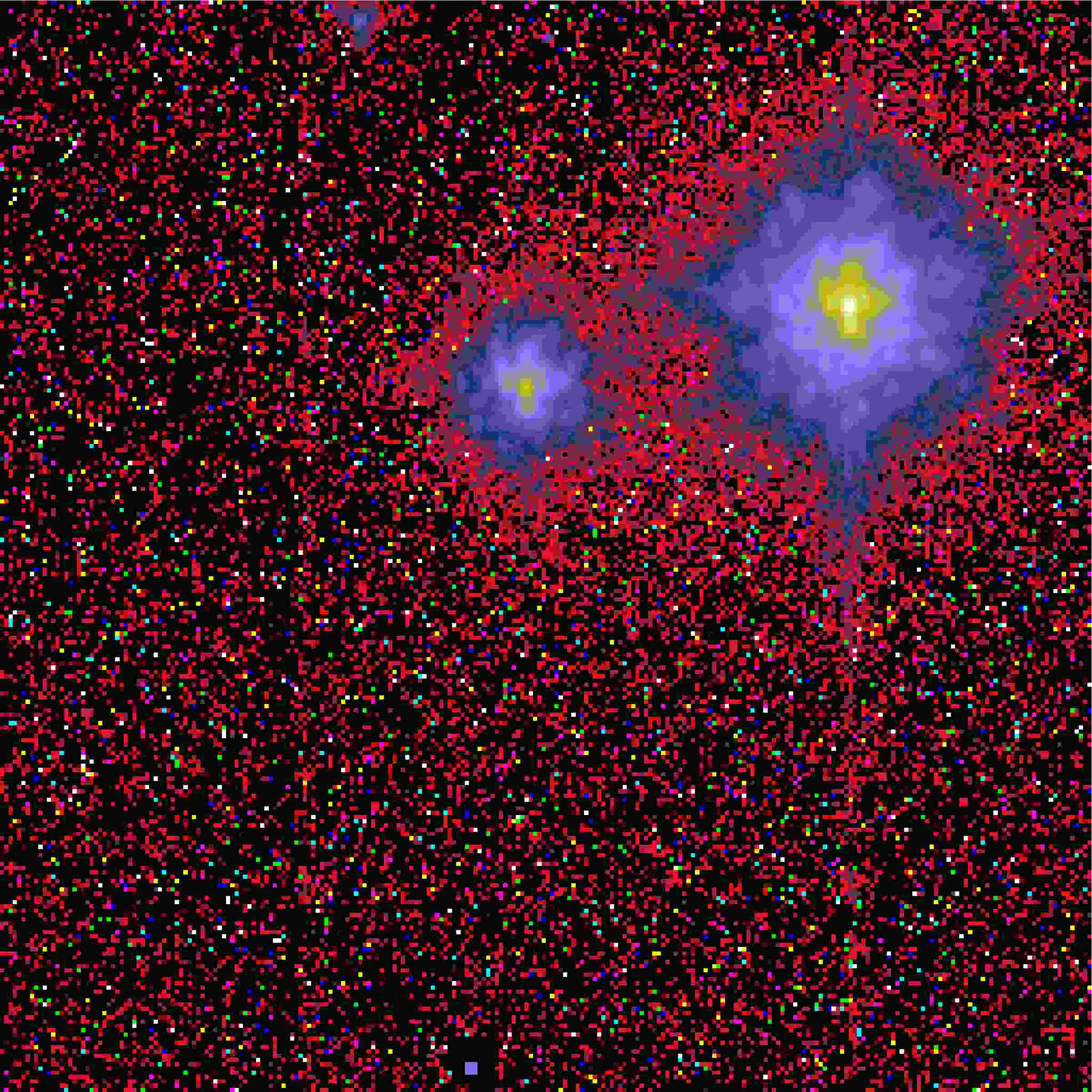The primordial binary population (PBP) is the population of binaries as established just after the gas has been removed from the forming system, i.e., when the stars can no longer accrete gas from their surroundings (Kouwenhoven et al, in preparation).
Knowledge about the PBP can improve our understanding about the formation and evolution of star clusters, the production and evolution of binary systems and the origin of the field star population and OB runaway stars.
OB assocations are prime candidates for studying the PBP. Because of their young age and low density, the binary population is expected to be relatively close to primordial. Most of the gas out of which the stars have formed is removed, which facilitates observations. The full IMF is present, from
B-stars to brown dwarfs, and can therefore be studied in detail. In specific, we study the young (~5 Myr) and nearby (~140 pc) OB association Scorpius OB2, for which the membership and stellar content was established by de Zeeuw et al. (1999).

The nearby OB association Sco OB2
By combing near-infrared adaptive optics observations with literature data of visual binaries, astrometric binaries and spectroscopic binaries if is possible to constrain the properties of the underlying population of binaries over all ranges of orbital separations.
Each of the different observing techniques and the different characteristics of each instrument adds a unique window to observe a certain range in orbital parameters. With the wide range of instruments and techniques just listed we can cover the entire range of orbital separations and mass ratios.
In Adition, one has to take into account the overall sample selection and completeness, and possible contamination with background stars.
To assure a correct interpretation of the binary statistics it is crucial to characterize all the selection effects and to account for the bias in the various observations. This can be done by Simulating Observations of Simulations. And with this approach we expect to be able to reconstruct the binary population at the moment the star cluster was born.

An adaptive optics K-band image of
the Sco OB2 member star HIP53701.
Do we see all companions? Including
the close and/or faint ones?
the Sco OB2 member star HIP53701.
Do we see all companions? Including
the close and/or faint ones?
In order to find the PBP we have to take into account that the binary population changes as a function of time. This is partly caused by stellar evolution, e.g. by supernova explosions that disrupt binary systems, by mass transfer and by angular momentum transfer. On the other hand, dynamical evolution (binary-binary encounters, etc.) also modifies the binary population.
We will investigate the effects of these mechanisms on the binary population as a function of time by simulating evolving OB associations using the starlab toolset. Using inverse dynamical population syntheses, we will derive the primordial binary population.

A starlab simulation of a star
cluster (N=1024, King model,
Salpeter IMF). How does the binary population change as a function of
time and distance to the cluster center?
cluster (N=1024, King model,
Salpeter IMF). How does the binary population change as a function of
time and distance to the cluster center?
Until recently no N-body simulation has been performed which included primordial triples. Of course there are also few observations to compare with. This is clearly a growing field with lots of interesting new physics, astronomy and computational science to explore.